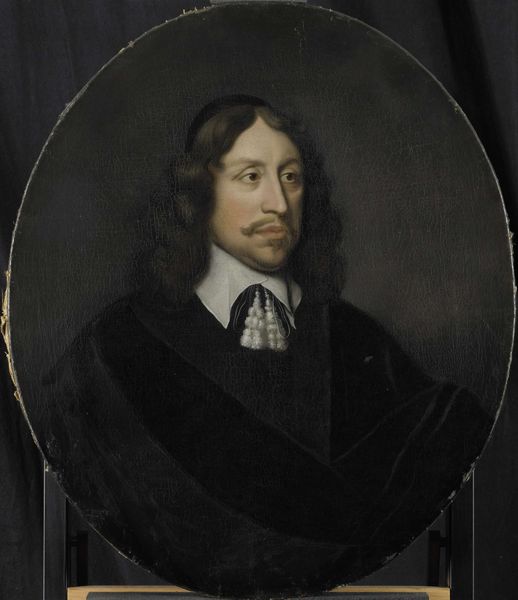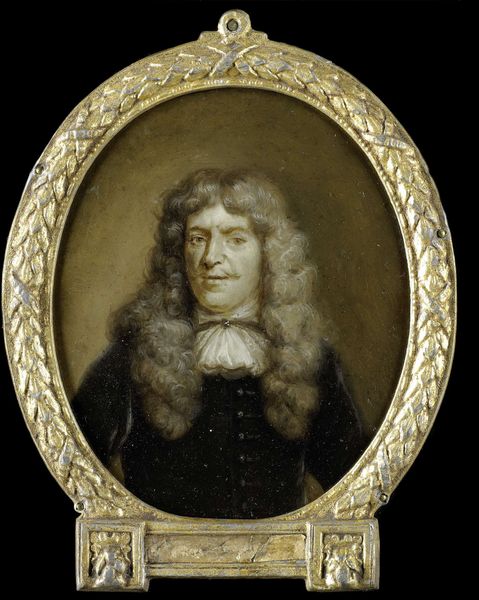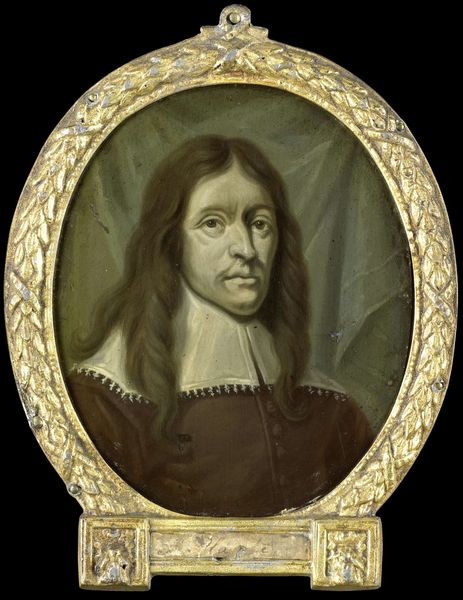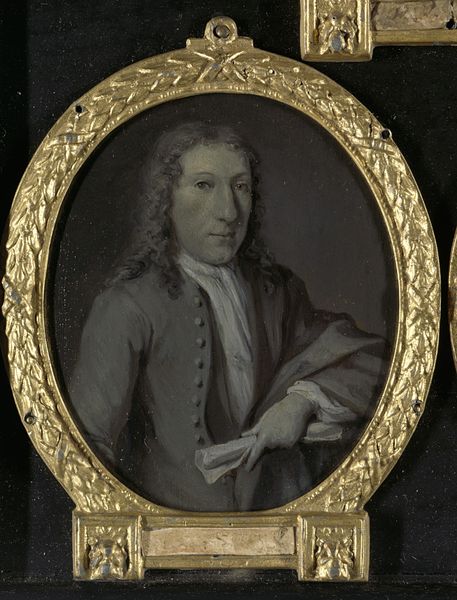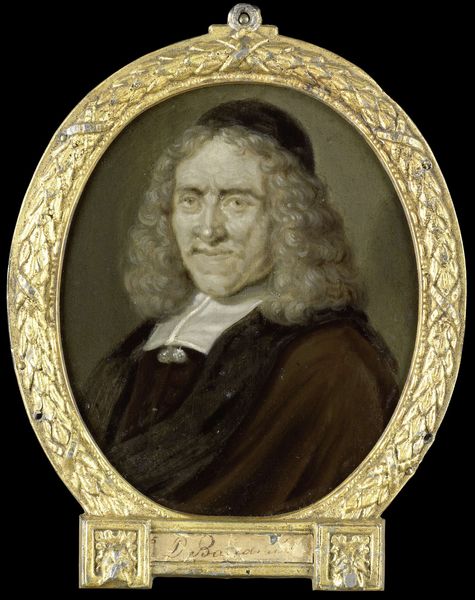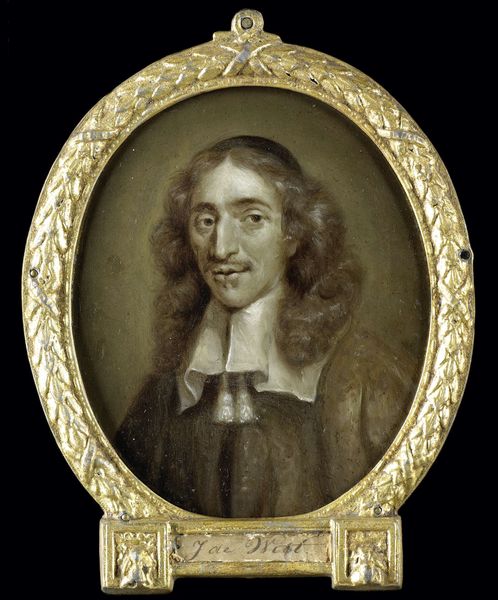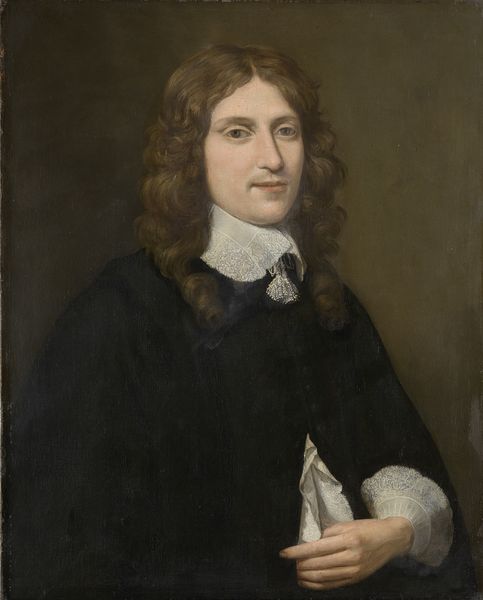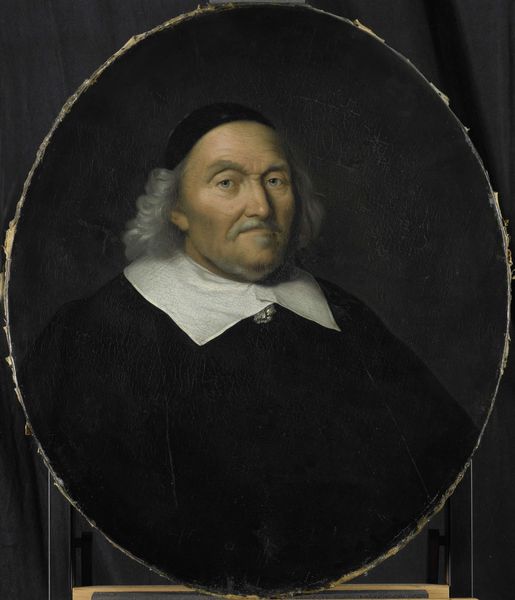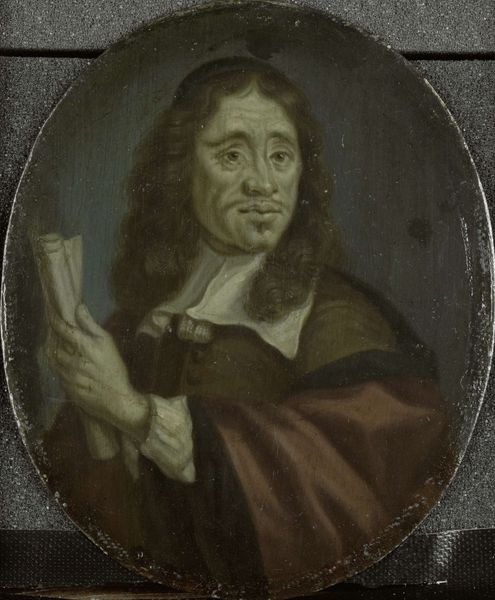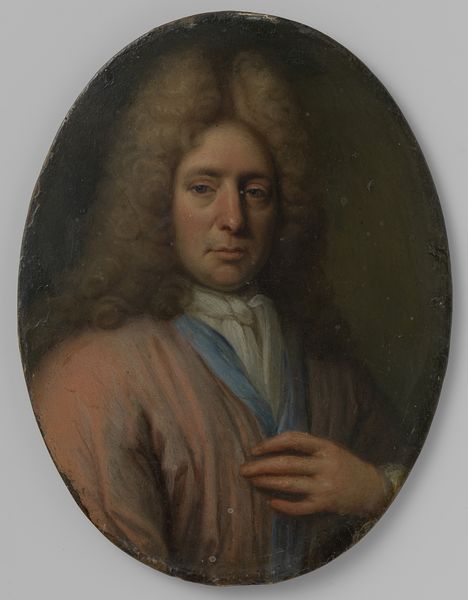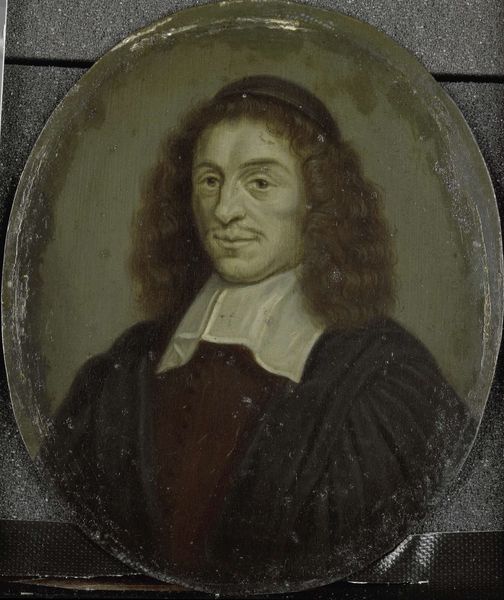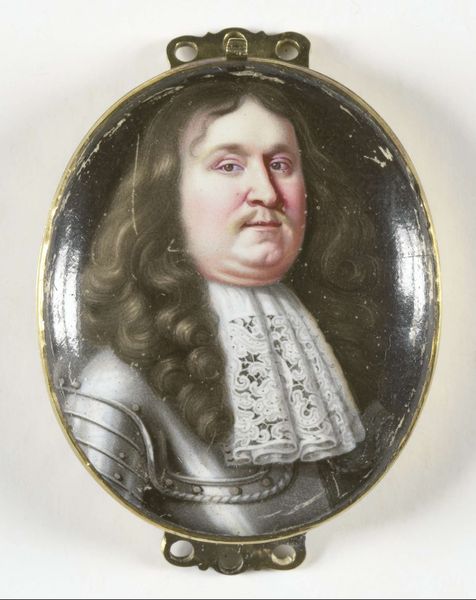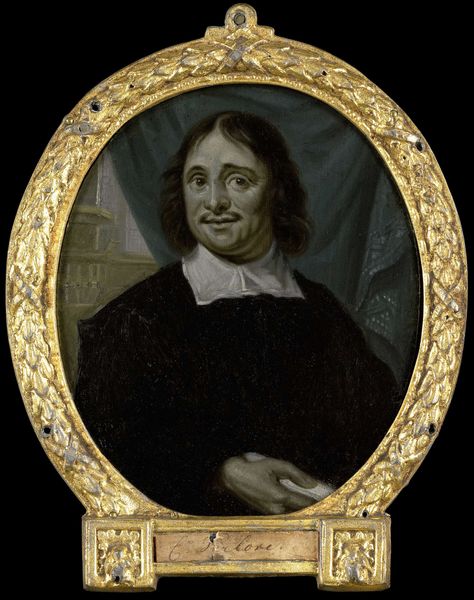
Portrait of Willem Hartigsvelt, Director of the Rotterdam Chamber of the Dutch East India Company, elected 1657 1695 - 1722
0:00
0:00
painting, oil-paint
#
portrait
#
baroque
#
dutch-golden-age
#
portrait
#
painting
#
oil-paint
#
history-painting
#
realism
Dimensions: height 82 cm, width 68 cm
Copyright: Rijks Museum: Open Domain
Curator: Welcome. Today, we're examining Pieter van der Werff's "Portrait of Willem Hartigsvelt, Director of the Rotterdam Chamber of the Dutch East India Company, elected 1657", likely completed between 1695 and 1722. Editor: The muted palette and rounded frame give the piece a sort of somber formality. It projects an air of mercantile severity. Curator: Quite. Consider that van der Werff was deeply engaged with the prevailing modes of production within Dutch society. Hartigsvelt, as a director within the VOC, the Dutch East India Company, wielded tremendous power and influenced global trade networks. Editor: Let's focus on the form, though. The stark contrast between the stark white collar and the heavy black robe anchors the composition. Note how the oval format contains, almost confines, the sitter’s presence. Curator: Yes, but this also hints at social constructs. That rigid, starched collar, for instance, both constrained and defined Hartigsvelt's public image, symbolizing status within the mercantile elite. Consider the wool trade, the bleaching agents used... the labour embedded. Editor: Perhaps, but I see something simpler at play. Van der Werff guides the eye. The light falls exquisitely on Hartigsvelt's face, pulling him forward while the background melts away. Curator: Light served practical functions in art creation and how it affected pigment properties... it's connected to available tools and the workshops available to the artist. We must remember that van der Werff didn’t have access to ready-made paints. Editor: True enough. There's a clear synthesis between visual representation and societal values at play here. Curator: And between material processes and the social structure of the time. Editor: Indeed. A complex layering of meaning and method captured on an oval. Curator: Precisely. A fine portrait that encapsulates its era's preoccupations, and a worthwhile subject of inquiry into history, the society of production, and much more.
Comments
No comments
Be the first to comment and join the conversation on the ultimate creative platform.
